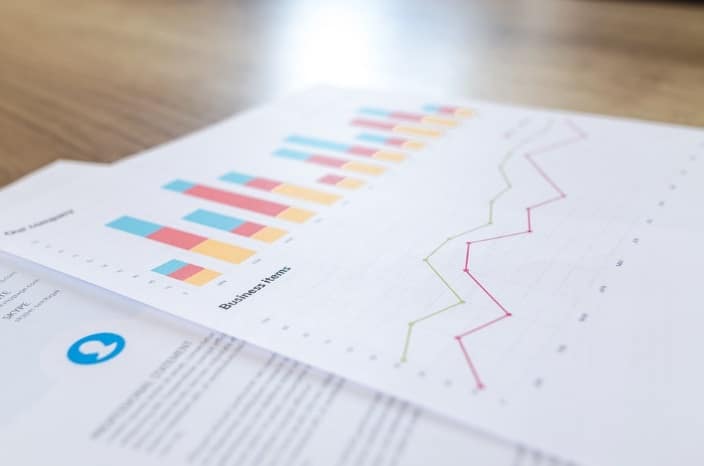
When you’re responsible for the financial health of your company, access to real-time information is crucial. Decision-makers need business data to analyze workflows deeply, optimize existing operations, evaluate risks, and reach goals that drive their strategy.
However, gathering financial data for analysis is tedious and consumes time if you’re still using a manual system. Companies using manual procedures have to collect invoices and input all data by hand, which is not only slow and inefficient but also gravely ineffective. These processes are rife with countless input errors, misplaced invoices, and delayed payments.
Invoice workflow automation enables businesses to make their AP departments more efficient, agile, and dynamic. Using AP automation solutions, the AP department can streamline invoice processing, vendor approval, and purchasing, and transform it into an efficient, centralized, digital workflow.
That said, one of the greatest benefits of invoice workflow automation is real-time monitoring and analytics. These features give decision-makers insight into strategic planning, financial planning, performance analysis, target setting, forecasting, and portfolio analysis.
5 Types of Accounts Payable Reporting
In this article, we will discuss 5 types of AP automation reporting every invoice workflow management needs.
1. Financial Reporting
Business leaders need forecasting data or progress reports on expenses over the coming weeks. Financial information listed in balance sheets represents the company’s assets, liabilities, and equity in a given period.
However, these balance sheets don’t reveal what has happened in operations that have resulted in changes in equity, liabilities, and assets. Investors need financial reports to understand all sales, expenses, and profits or losses. These reports help investors assess the company’s past performance and better understand the uncertainty in cash flow in the future.
At the same time, financial reporting helps managers identify cash inflows and outflows from other non-operating activities in a given period. This means managers can take into account cash from all sources and instead of just income from operations, making it easier to divide income between all shareholders more transparently.
2. Accruals Reporting
In accrual accounting, you need to report revenues on the income statement as soon as they are earned. In case a company earns revenues but doesn’t receive cash, assets are recorded as receivables. Similarly, you have to report expenses on the income statement if they match up with the reported revenues being reported, or if a cost doesn’t have a measurable future benefit.
This is why in accruals reporting, you must follow a different technique than traditional financial reporting. AP accruals reporting features let businesses summarize the revenues earned and expenses incurred more accurately, giving businesses a more in-depth analysis of the company’s profitability. At the same time, businesses can identify all their assets and liabilities more accurately at the end of an accounting period.
Learn how Longo’s saved time and headcount costs with modernizing their accounts payable automation platform…
3. Invoice Cycle Reporting
Generating and delivering accurate invoices is critical for the day-to-day operation of your business. A fast and efficient invoice workflow not only lets you address unpaid invoices more effectively, but also allows you to create invoices for your clients in a timely and organized manner.
However, with so many incoming and outgoing invoices, it’s difficult to keep track of all of them. Businesses require invoice cycle reporting to access a comprehensive breakdown of all transactions in the system and understand selected lead data more effectively.
Using invoice reporting, managers have a clear view of the invoice workflow. They can monitor every step from generation to approval to payment and identify bottlenecks in the invoice workflow efficiently. Since automated AP reporting features already provide managers with all recent updates, there is no need to keep a manual log of the status of invoices.
4. Compliance and Fraud Reporting
Another benefit of automated AP reporting is that it allows you to access compliance and fraud reporting. This kind of reporting ensures complete visibility over invoice workflow and financial transactions, reducing the risk of fraud significantly.
Before automated systems, paperwork in manual systems was easily misfiled, destroyed, or stolen. Shifting to a digital solution offers companies a higher degree of security for your customer’s data, as well as their own.
When company data is stored and updated in a central repository, it’s easier for financial managers to control and monitor levels of access for each one of your AP staff. AP automation tools clearly define access controls for members of your AP department, so your team only uses the data they access.
At the same time, additional features such as encryption and banking-level security measures protect your organization’s document archives and avoid phishing scams. So if some staff member tries to go beyond their authorized access, managers can receive alerts regarding such breaches.
Similarly, automated solutions simplify compliance simple and reduce audit risk. Permission-based access controls accompanied audit trails to ensure easy compliance with industry and accounting regulations.
Detailed compliance reporting lets managers track invoice history and approval. They can also construct a chain of custody, establish controls for rules and regulations (such as PCI, HIPPA, etc.), and protect documents so they aren’t lost ahead of deadlines.
5. Supplier Reporting
It’s really common for businesses to have connections with dozens of suppliers at once. However, if you are working with many suppliers at once, it can make it difficult for the accounting department to manage the profile of each supplier effectively.
This is where supplier reporting can be crucial for any business. Supplier reporting summarizes the overall participation of suppliers, making it extremely easy for managers to assess the performance of each supplier and review the rates of each available vendor.
Simultaneously, using supplier reporting, the manager can always be aware of all invoice statuses, as well as the cost or time frame associated with each payment or dispute settlement. This helps managers constantly stay in the loop and accurately effectively respond to supplier questions and address dispute settlements more effectively.
Invoice workflow can be complex, time-consuming, and difficult to manage. However, with the help of automated accounts payable reporting, managers can overcome these challenges and gain clear insights into the entire invoice workflow. Managers can enjoy increased control over invoice processing without worrying about payment reminder notices and constant follow-ups.
If you are keen on learning more about Accounts Payable Automation, consider reading our guide.







